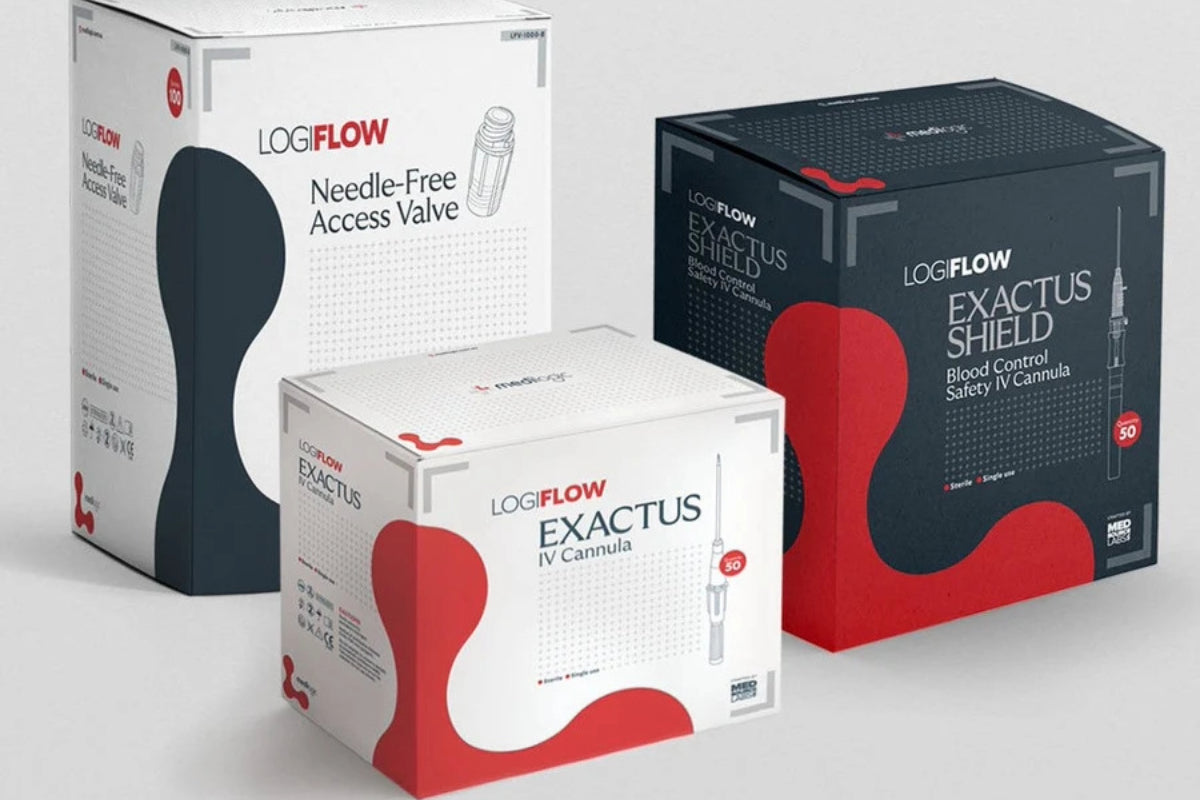Medilogic Launches the LOGIFLOW Range of IV Cannulas to Enhance Patient Comfort and Safety
Intravenous (IV) cannulation is among the most common medical procedures worldwide, yet patients often face complications during insertion and securing of cannulas. To address these challenges and enhance patient outcomes, Medilogic is proud to introduce the LOGIFLOW range of IV cannulas—designed to improve safety, comfort, and ease of use for healthcare professionals.
The Use of IV Cannulas in Australia
IV cannulation is essential for patients needing fluid infusion or multiple blood draws. In Australia, it is estimated that 70% of hospitalized patients[1] require at least one IV cannula during their stay. A well-functioning IV line can remain in place for several days, reducing the discomfort of repeated needle insertions and minimizing the risk of complications.
Common Risks Associated with Cannula Insertion
Despite its routine nature, cannulation is not without risks. Up to 69% of IV cannulas[2] are linked to complications, such as:
• Blockage and dislodgement
• Phlebitis (vein inflammation)
• Thrombophlebitis (clot formation)
• Line-related bloodstream infections
Nearly half of all first attempts at cannula insertion fail[3], leading to increased patient pain and anxiety. Multiple failed attempts not only heighten patient discomfort but also elevate the risk of complications, underscoring the need for a more reliable solution.
Introducing the LOGIFLOW IV Cannula Range by Medilogic
With 40% of IV cannula devices[4] reportedly failing, there is a pressing need for innovation in this vital area of medical care. Medilogic is committed to advancing patient outcomes by providing healthcare professionals with cutting-edge tools.
The LOGIFLOW IV Cannula range is engineered to meet these needs, offering a new standard in vascular access.
Key Features of the LOGIFLOW IV Cannulas
• LOGIFLOW Exactus IV Cannula: This cannula is specifically designed for IV solutions and intermittent drug administration. It features a triple facet, back cut, bevelled needle that minimizes trauma at the insertion site. The cannula is made with VenaPUR® material, ensuring flexibility, strength, and resistance to kinking. Compliant with TGA and international standards, the LOGIFLOW Exactus sets a new benchmark in Australian healthcare.
• LOGIFLOW Exactus Shield BC IV Cannula: Ergonomically crafted, this cannula includes a textured hub and contoured housing for a secure grip. It also features a fully encapsulating needle shield, ensuring safety without compromising functionality.
• LOGIFLOW Needle-Free Access Valve: This innovative valve eliminates the need for multiple needle insertions, enhancing patient comfort and protecting staff from needlestick injuries. The valve opens under pressure to allow fluid or medication administration and closes automatically to prevent blood leakage, reducing the risk of infection. Its neutral displacement mechanism further mitigates potential complications.
Experience the Benefits of LOGIFLOW IV Cannulas
Discover how the LOGIFLOW IV Cannula range can improve your practice and patient care.
Contact us today to request samples and learn more about these revolutionary products.
References
[1]
-
Bausone-Gazda D, Lefaiver CA, Walters SA. A randomized controlled trial to compare the complications of 2 peripheral intravenous catheter-stabilization systems. J Infus Nurs 2010;33:371-84.
-
Helm RE, Klausner JD, Klemperer JD, Flint LM, Huang E. Accepted but unacceptable: peripheral IV catheter failure. J Infus Nurs 2015;38:189-203.
[2]
-
Marsh N, Webster J, Larson E, Cooke M, Mihala G, Rickard CM. Observational Study of Peripheral Intravenous Catheter Outcomes in Adult Hospitalized Patients: A Multivariable Analysis of Peripheral Intravenous Catheter Failure. J Hosp Med 2018;13:83-9.
-
Wallis MC, McGrail M, Webster J, et al. Risk factors for peripheral intravenous catheter failure: a multivariate analysis of data from a randomized controlled trial. Infection control and hospital epidemiology 2014;35:63-8
[3]
-
Cooke M, Ullman AJ, Ray-Barruel G, Wallis M, Corley A, Rickard CM. Not "just" an intravenous line: Consumer perspectives on peripheral intravenous cannulation (PIVC). An international cross-sectional survey of 25 countries. PLoS One 2018;13:e0193436.
-
Jacobson AF, Winslow EH. Variables influencing intravenous catheter insertion difficulty and failure: an analysis of 339 intravenous catheter insertions. Heart Lung 2005;34:345-59.
-
Malyon L, Ullman AJ, Phillips N, et al. Peripheral intravenous catheter duration and failure in paediatric acute care: A prospective cohort study. Emerg Med Australas 2014;26:602-8.
[4]
-
Rickard CM, Marsh N, Webster J, et al. Dressings and securements for the prevention of peripheral intravenous catheter failure in adults (SAVE): a pragmatic, randomised controlled, superiority trial. Lancet 2018;392:419-30.



